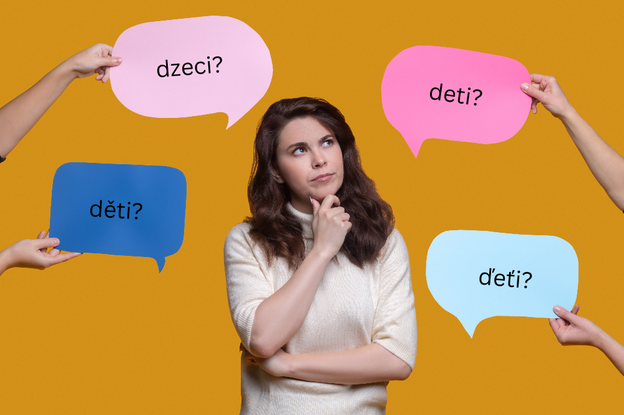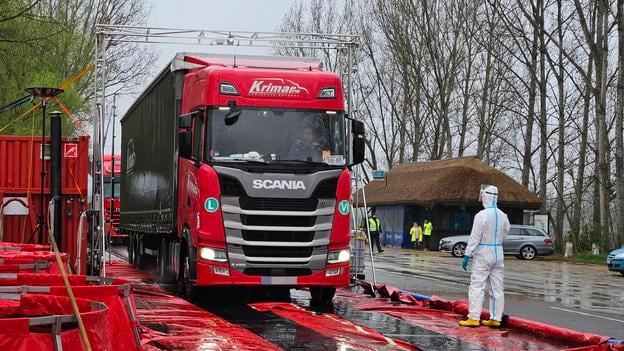Good evening. Here is the Friday, March 28 edition of Today in Slovakia - the main news of the day in less than five minutes.
Teaching in the capital: overworked, underpaid, and stressed out
On Teachers’ Day, March 28, a new study has shed light on the harsh realities facing educators in Bratislava’s primary and art schools, revealing low pay, packed classrooms and high stress levels that continue to undermine the teaching profession in the capital.
The issue of teachers’ salaries in Slovakia has long been a concern. Wages remain low and pay rises are unpredictable. The detailed study now shows that teachers in Bratislava face the toughest conditions.
“In 2023, primary school teachers nationwide earned 120 percent of the average wage. In the Prešov Region, it was even 158 percent, but in Bratislava, teachers earned only as much as the regional average,” explains Michal Rehúš from the Centre for Educational Analyses.
As a result, financial hardship and staff shortages persist. Analyst Alexandra Ostertágová noted that 89 percent of Bratislava’s teachers reported struggling to cover their living costs, and nearly a third have a second paid job alongside teaching.
At the same time, the Statistics Office reported that teacher salaries have risen in recent years, with average wages in 2023 ranging from €1,300 to €1,924. Primary school teachers earned €1,703 on average, secondary school teachers €1,732, and university lecturers €1,924. Between 2019 and 2023, salaries rose by 26 percent at universities and up to 36 percent at primary schools. With few exceptions, female teachers earn more than their male counterparts.
The analysis also finds that classrooms in Bratislava are more crowded than elsewhere. While primary classes across Slovakia have 17 pupils on average, in Bratislava the figure is 21. At secondary level, the national average is 19 — in the capital, it is 22.
“The idea that Bratislava teachers have an easier job does not hold. While there are fewer socially disadvantaged pupils, nearly one in 10 primary school children comes from a foreign background,” said Rehúš. Teachers must adapt their methods to pupils who struggle with the language or come from different cultural contexts.
Teaching is among the most stressful professions — and the centre’s survey of Bratislava teachers confirms it. Nearly 89 percent of primary school teachers reported stress, with 63 percent saying it negatively affects their mental health. Teachers face a heavy workload, from supervision and admin to lesson preparation — often working late evenings or weekends.
“Support for teachers should be a priority,” Rehúš said, adding that quality education depends on a well-prepared, stable teaching staff. The lack of comprehensive research into working conditions highlights the need to focus more on teachers’ mental health and well-being, Ostertágová added.
Slovakia’s teachers by the numbers
The Statistics Office has published a snapshot of the country’s educators, offering insights into gender balance, age distribution and how Slovakia compares with EU peers.
Women dominate the classroom: Teaching in Slovakia remains a female-dominated profession. In 2023, the country counted roughly 91,000 teachers, including 42,000 in primary schools. Women made up 84 percent of primary and 71 percent of secondary school teachers. The gender gap narrows in higher education, where men slightly outnumber women.
One of the EU’s worst student-teacher ratios: Slovakia ranks among the EU countries with the highest number of pupils per teacher—14, compared to the EU average of 12. Only the Netherlands and France fare similarly poorly. In contrast, Greece, Luxembourg, Malta and Croatia boast the most favourable conditions, with eight to nine students per teacher.
Ageing profession: Nearly 80 percent of teachers in preschools, primary and secondary schools are aged between 30 and 59. Just 10 percent are under 29, while 12 percent are over 60, pointing to an ageing workforce and a potential recruitment challenge ahead.
MORE STORIES FROM THE SLOVAK SPECTATOR WEBSITE
Opinion: Tax season is not just about paperwork and pressure — it is an opportunity to give back. Taxpayers in Slovakia can allocate up to 2 percent of their income tax to a registered non-profit. Whether you are filing as a business or an individual, the process is simple. Ready to make a difference?
Weekend: Slovakia’s spring calendar is heating up. A popular anime show returns, space enthusiasts can celebrate Planetarium Day, and American football fans can finally see the sport up close. Pick your favourite event.
Good news: A proud father cancelled his flight home to witness his son’s unforgettable NHL debut, Juraj Slafkovský and his teammate amused fans off the ice. Here is your latest round of feel-good stories.
Transport: Bratislava’s seasonal forest buses are back, just in time for spring hikes. New tram stops and route changes are also in effect.
History: Once the fourth-largest town in Slovakia, Nové Zámky was nearly obliterated by Allied bombings during WWII. Eighty years on, survivors and historians reflect on the town’s tragic past — and its resilience.
If you like what we are doing and want to support good journalism, buy our online subscription with no ads and a print copy of The Slovak Spectator sent to your home in Slovakia. Thank you.
SLOVAK MATTERS
Tiny country, tower of Babel
Slovakia’s language is a mosaic of regional dialects, each with its own quirks and character. In Trnava, even cats meow differently — “mnau” replaces the more familiar “mňau”. In Bratislava’s Dúbravka district, beer becomes “pifko” instead of “pivko”. From the hard, clipped sounds of western speech to the softened consonants of the central regions, these variations reflect local identity and pride. Curious how language shifts across Slovakia—and what it reveals about its people? Read on!
EVENT FOR THE WEEKEND
Bratislava Castle brings a taste of Italy with Vespa exhibition
Can’t get away but dreaming of Italy? A slice of la dolce vita has arrived in Bratislava. The Historical Museum at the Slovak National Museum, housed in Bratislava Castle, is hosting an exhibition of iconic Italian Vespa scooters. On display until 11 May, the showcase features models from various decades, drawn primarily from the private collection of engineering magnate Marco Fumagalli of Seregno.
IN OTHER NEWS
Volkswagen Slovakia has leased a new 20,000 m² logistics facility in Panattoni Park Bratislava North II, designed primarily for component storage. The site features side-loading capabilities to streamline the handling of oversized automotive parts. The move is expected to bolster the automotive supply chain while delivering regional economic benefits, including job creation and improved infrastructure.
A team of four young Slovaks has claimed first place at Ireland’s biggest cybersecurity contest, ZeroDays CTF, held in Dublin. The Slovak Cyber Team — comprising Marek Geleta, Tomáš Proks, Ivan Lepieš and Matúš Mandzák — topped the leaderboard after tackling a series of complex challenges across cryptography, hardware and web security, reverse engineering, forensics and penetration testing. The annual competition is designed to spot emerging talent and inspire the next generation of cybersecurity professionals. (TASR)
Prime Minister Robert Fico, now in office for a fourth term, made his first visit to the National Gallery (SNG) in Bratislava on Friday afternoon — an appearance that lasted just 30 minutes and raised more questions than it answered. Fico entered the gallery via a back entrance and headed directly to an exhibition featuring a viral video by Culture Minister Martina Šimkovičová. He did not engage with artists, address the recent dismissal of former gallery director Alexandra Kusá, or comment on ongoing internal reshuffles. The visit was timed for a day when many staff members were away on a team-building event. Outside the building, protesters gathered in response to recent changes at the gallery. (Denník N)
Confidence among Slovak entrepreneurs and consumers declined in March, reversing last month’s modest improvement. The Economic Sentiment Indicator fell by 3.3 points to 99.6. The downturn was driven primarily by increased pessimism in the services and industrial sectors — two of the five components making up the index. Despite this, sentiment improved among entrepreneurs in construction and retail, while consumer confidence also recorded a slight uptick. (Statistics Office)
Roughly 200 farmers from virus-affected regions in southern Slovakia gathered outside the Government Office in Bratislava on Friday to protest against current measures aimed at controlling foot-and-mouth disease. The demonstrators oppose the blanket culling of healthy livestock and are calling for a shift in strategy. Instead of mass euthanasia, they advocate for targeted quarantines on infected farms, allowing only sick animals to be put down. (Denník N, Sme)
Slovakia stands ready to provide assistance in the wake of a powerful earthquake that struck central Myanmar on Friday, Parliamentary Speaker Richard Raši (Hlas) said in a statement posted on social media. The 7.7-magnitude quake was felt across central Myanmar and also registered in parts of China and Thailand.
Slovak diplomat and former EU special representative for the Belgrade–Pristina dialogue, Miroslav Lajčák, will serve as an adviser to Prime Minister Robert Fico on Western Balkans affairs, President Peter Pellegrini announced during his official visit to Albania on Friday.
WEATHER FOR THE WEEKEND: It will be cloudy but mild, with daytime temperatures ranging from 11°C to 17°C. However, Saturday is set to bring occasional showers, so pack an umbrella or raincoat if you are heading out. Rain is also expected on Sunday night. (SHMÚ)
WEEKEND PARTY TIME: This weekend, Miroslav, Vieroslava and — last but not least — Benjamín are marking their name days. Don’t forget to send your best wishes: Miroslav on Saturday (29 March), Vieroslava on Sunday (30 March), and Benjamín on Monday (31 March).
Thank you for subscribing and reading. It means a lot to us.
P.S. If you have suggestions on how our news overview can be improved, you can reach us at editorial@spectator.sk.
Follow The Slovak Spectator on Facebook, LinkedIn and Instagram(@slovakspectator).


 A homeroom teacher hands out mid-year report summaries to first-year pupils at Ľudovít Fulla Primary School in Košice on 31 January 2025, marking the end of the first term of the 2024/2025 school year. (source: TASR - František Iván)
A homeroom teacher hands out mid-year report summaries to first-year pupils at Ľudovít Fulla Primary School in Košice on 31 January 2025, marking the end of the first term of the 2024/2025 school year. (source: TASR - František Iván)
 Which one is right? (source: zinkevych/Freepik)
Which one is right? (source: zinkevych/Freepik)
 Scooter Vespa (source: Freepik)
Scooter Vespa (source: Freepik)
 A lorry passes through a disinfection gate in the village of Medveďov, Dunajská Streda district, during an outbreak of foot-and-mouth disease on Friday, 28 March 2025. (source: TASR - Milan Drozd)
A lorry passes through a disinfection gate in the village of Medveďov, Dunajská Streda district, during an outbreak of foot-and-mouth disease on Friday, 28 March 2025. (source: TASR - Milan Drozd)